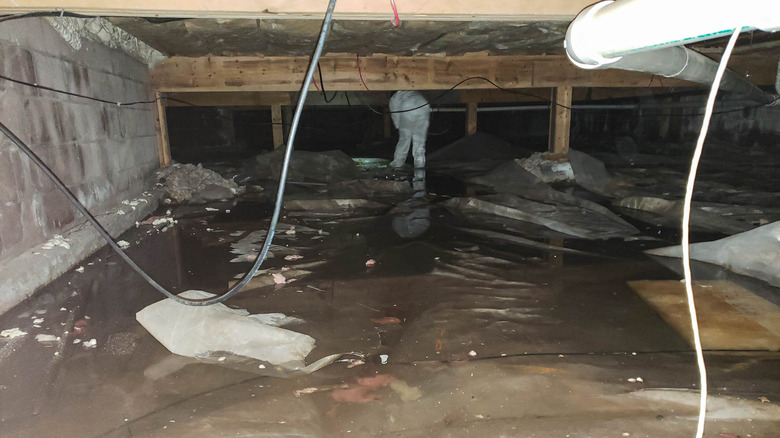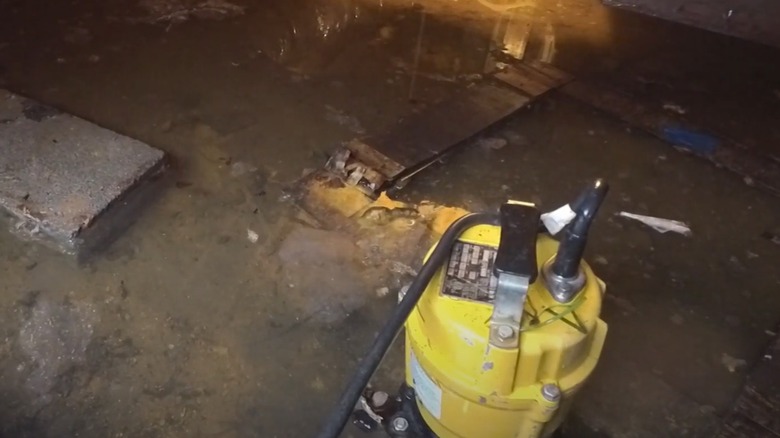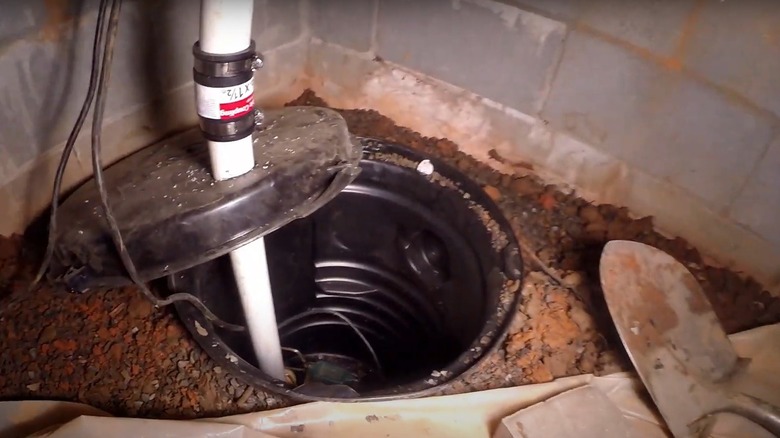How To Get Rid Of Water That's Flooded Your Crawl Space (& When To Call An Expert)
Standing water inside your crawl space can be a significant problem. This area is a common type of foundation that contains structural supports that distribute the weight of the home. It may also contain plumbing, electrical wiring, and service cables. A constantly flooded crawl space can damage your property's foundation, causing rot and awful smells. Rodents and insects may move into the area, drawn to the damp wood and standing water. Additionally, a significant amount of air from the crawl space — roughly around 50% — will eventually enter your indoor living areas. If you have excessive water under your property, the humidity in the crawl space will be higher and affect the humidity of the interior.
If you have flooding in your crawl space, removing the water and preventing it from returning is extremely important. You have some DIY options for this undertaking, such as trenching a line that drains the area. However, you may instead want to call in a professional for help with other options, especially if you want to encapsulate or seal the area or install a sump pump. It can be tough to work inside the tight conditions, too, which may convince you to hire a pro. Let's dive deeper into your options for eliminating a flooding problem inside your crawl space.
How to remove water from your crawl space on your own
If you have a one-time flooding issue in your crawl space because of a broken plumbing pipe or an unusual rainstorm, the easiest way to remove the water is by using a wet-dry vacuum or a pumping system (you'll probably have to rent one). With the pumping system, place the suction hose into the standing water and funnel it far away from the home. After pumping out the standing water, dry the crawl space as quickly as possible to prevent damage. Rather than allowing it to air-dry, use a dehumidifier to reduce the likelihood of mold and mildew formation.
If the flooding or water collection issue is more persistent, you could install a French drain. This is a trench that uses gravel or sand as a lining. As water collects in the crawl space, it seeps into the French drain and through a buried pipe that migrates the water to a lower area elsewhere on the property and away from the home. YouTube content provider Apple Drains explains the process of digging the trench in the crawl space, which can be very difficult because of the sticky mud and limited room to work. However, you don't have to dig too deep — you can build the French drain in the crawl space near the surface, where it can catch flooding issues.
When to call a professional to help
One of the most efficient ways to remove persistent flooding in your crawl space is to install a sump pump. But before you buy one, you should understand the difference between submersible and pedestal designs. For the crawl space, the submersible sump pump is the better choice, as the installer can place it completely underground, where it quickly moves the standing water out of the area. Digging the hole for the machine can be difficult, and a professional will have the tools to do the job correctly. Sump pumps also frequently need electrical and plumbing connections, so you may need to hire a pro to connect the device properly.
Another option that requires the help of a professional is encapsulating the crawl space, which keeps the area dry. To do this, you'll need to repair any structural issues inside the area. You then install a vapor barrier, a drainage system, a dehumidifier, and seal the vents. It may cost a couple thousand of dollars or more for a professional to encapsulate your crawl space. However, this usually is a better option than doing a DIY job because of the difficulty of the work and the need for specialty equipment that you'd probably have to rent. The best type of person to hire for this type of work is a foundation repair professional.


